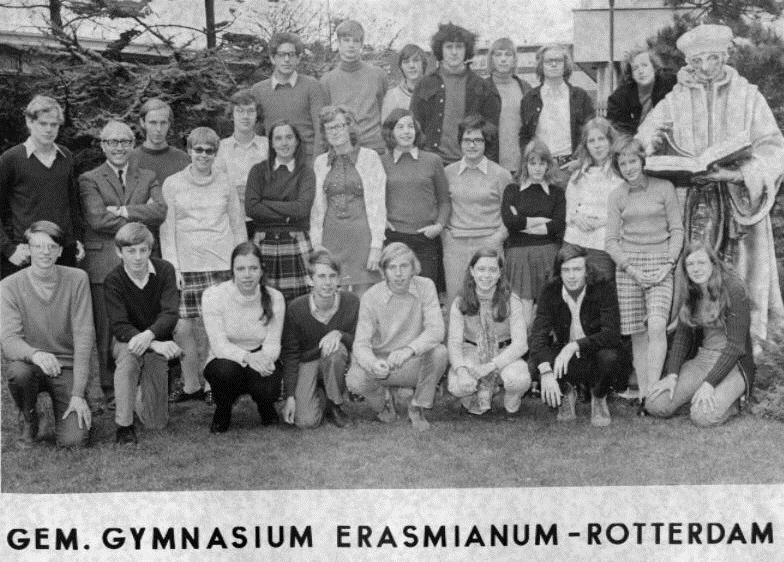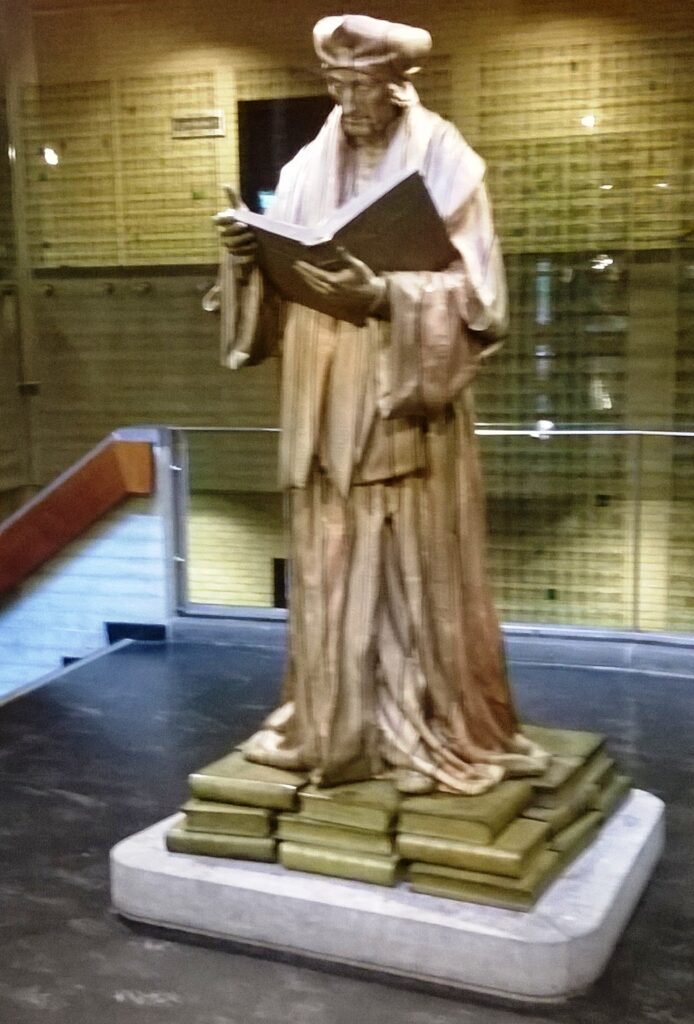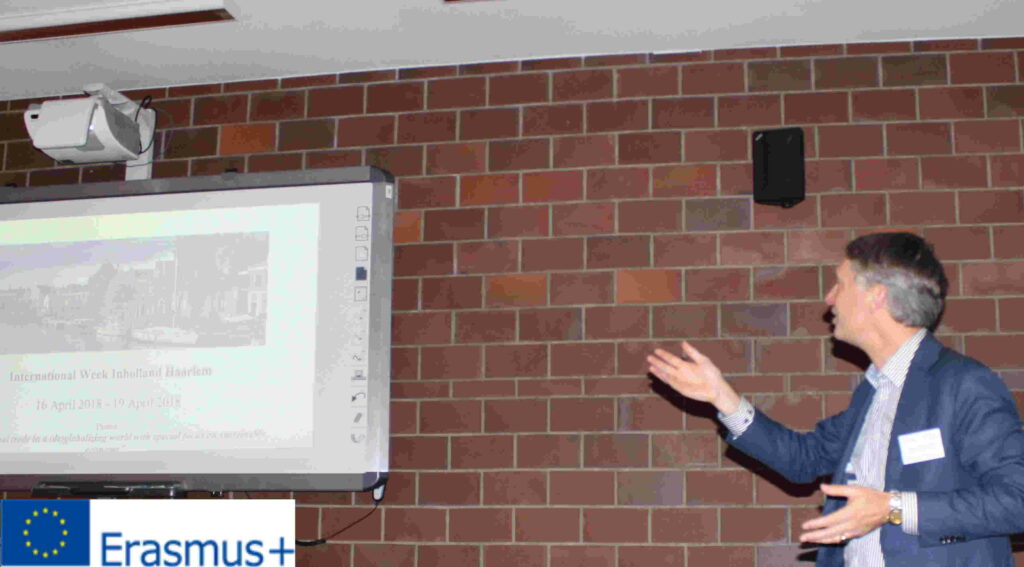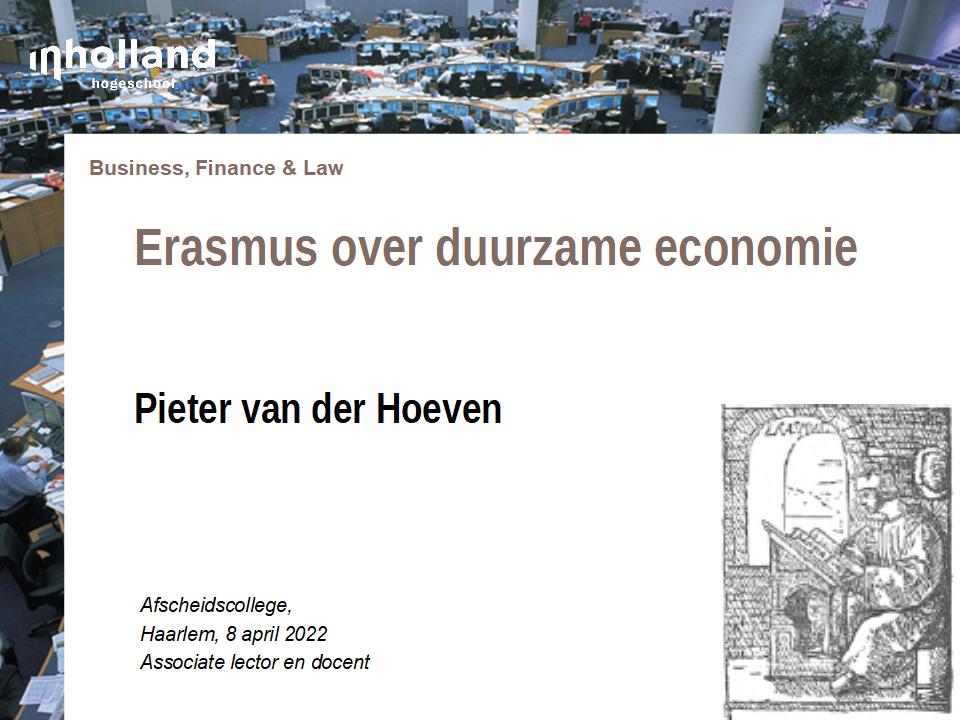That the views of Erasmus would still be so relevant in this century, I had not realized before. I found that out now that I am immersing myself in his views. And I also discover that I am not the only one who calls himself Erasmian without understanding how valuable his legacy can be for us.
My son once asked me at breakfast what I would do after retirement. He suggested cycling after a famous person. Then I – as a former student of the Gymnasium Erasmianum, former employee of the Erasmus University and Erasmus exchange teacher – immediately thought of Erasmus, and so the idea of Erasmus XXI was born.
Erasmus lived five centuries ago but his ideas about responsible living are still relevant today and inspire me. I cycle through schools in Europe that have a connection to Erasmus to share that inspiration.
Gymnasium Erasmianum

On Saturdays we still had school at Erasmiaans. So for six years I walked past the statue of our grammar school’s namesake, Desiderius Erasmus, all school weeks six days a week. The statue, a polyester cast of Hendrik de Keyzer’s 1622 sculpture had apparently been cruised outside for the 1972 class photo to serve as a backdrop.
We had a classical languages teacher, Van der Blom, who was a real Erasmus enthusiast; the last lesson before the vacations he always spent on something ‘fun’, we would not translate Homer, but read something by or about Erasmus. I confess that this did not always interest me very much, but I did learn that Erasmus deserved to be followed, especially because of his beautiful Latin and because he was a humanist, which was a different kind of humanism than today’s.
Erasmus University

Around 2000, I worked at the Faculty of Business Administration at Erasmus University for several years. After a successful defense of their thesis, the newly graduated students had their pictures taken with champagne and flowers near – again – a statue of Erasmus, another copy of De Keyzer’s sculpture. In 2009, artist Gerard Frishert created the sculpture Desiderius Multiplex, which replaced the cast. The stack of books, on which he stands, elicits the comment from many, happy to be done with all those thick pills now.
In my opinion, most students have not actually read anything by Erasmus in five years of study, but presumably have admired his willingness to travel and work which made him so famous. And I get the impression that teachers and professors also know mainly that Erasmus was internationally oriented, but what he had to say in terms of content is unclear to many.
Erasmus program

From 1978 to 1979, I studied mathematics in Paris for a year through a bilateral exchange day. There was no ERASMUS program back then, so taking credits didn’t exist. There has been since the 1980s and until corona I went from Inholland University of Applied Sciences to a foreign college or university once or twice a year as part of the ERASMUS program. By way of introduction, I would say that I was born in Rotterdam, just like the famous Erasmus. Only then did some students realize that the acronym of the EuRopean Community Action Scheme for the Mobility of University Students refers to a person, but most of them realized that Erasmus was a European avant la lettre.

Original Erasmus program logo (Wielemans, 1991)
That naming came about rather ambiguously, as Wielemans (Erasmus assessing ERASMUS, 1991) notes: When introducing the ERASMUS program, the European Commission makes no reference to Desiderius Erasmus anywhere in the text, but does use his effigy as its logo. Alan Smith, then in charge of the exchange program, is said to have coined the name under the shower inspired by Erasmus as a universal cross-border European scholar (30 Jahre Erasmus: “Man verliebt sich nicht in einen Binnenmarkt,” DAAD, 18 Sept. 2017).
Farewell lecture Erasmus on sustainable economy

Curriculum vitae
Pieter van der Hoeven
- 1955: Born in Rotterdam
- 1967-1973: Gymnasium Erasmianum
- 1973-1983: Studied Mathematics University of Leiden (and Paris); PhD 1983
- 1983-2000: Hoogovens Staal (now Tata Steel Netherlands): organizational consultant, logistics manager
- 2000-2002: University lecturer in the faculty of business administration, Erasmus University
- 2002-2005: College teacher of mathematics.
- 2005-2022: Hogeschool Inholland (University of applied science): Lecturer and associate professor Finance (Making money in the sustainable economy), ERASMUS lecturer Berlin, Bonn, Katowice, Lyon, Osnabrück, Troyes.
- since 2022: Erasmi Alumnus
